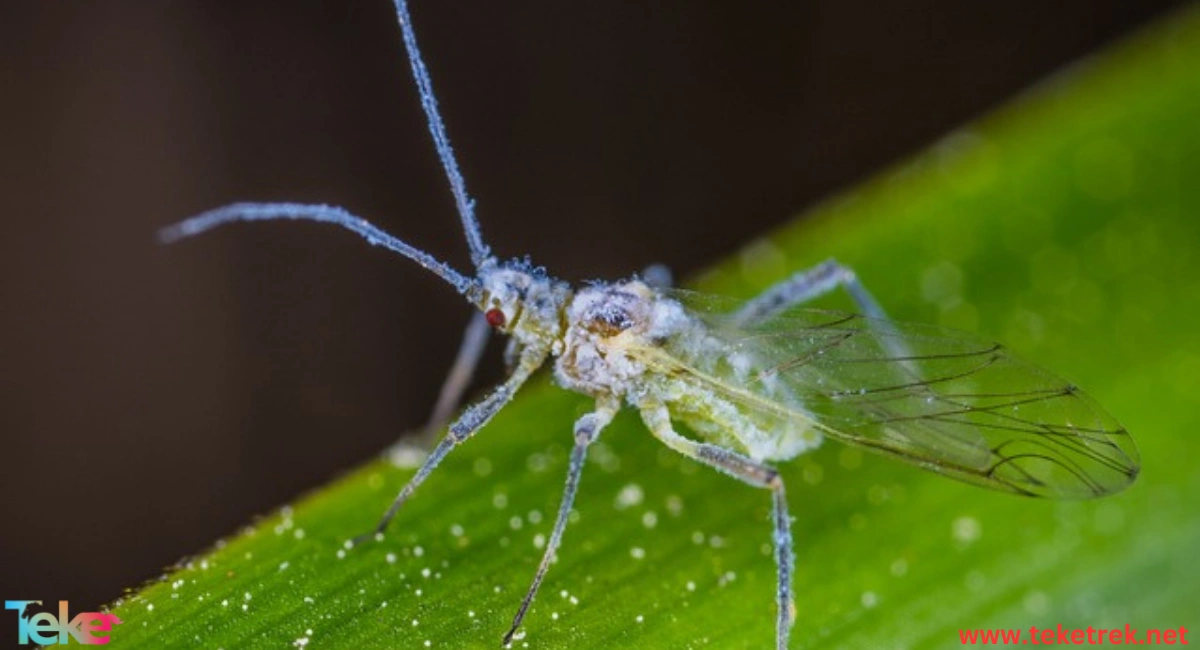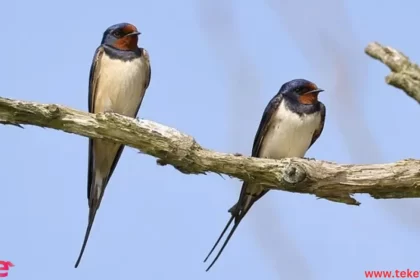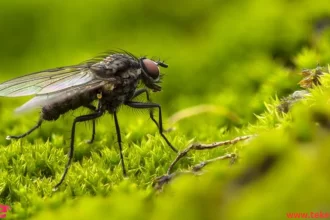Aphids are among the most destructive pests to cultivated plants in temperate regions, causing various damages such as leaf yellowing and curling, reduced yield, and even death in some cases. Continue reading this article on TekeTrek to learn about aphids, their life cycle, and the potential damages they can cause.
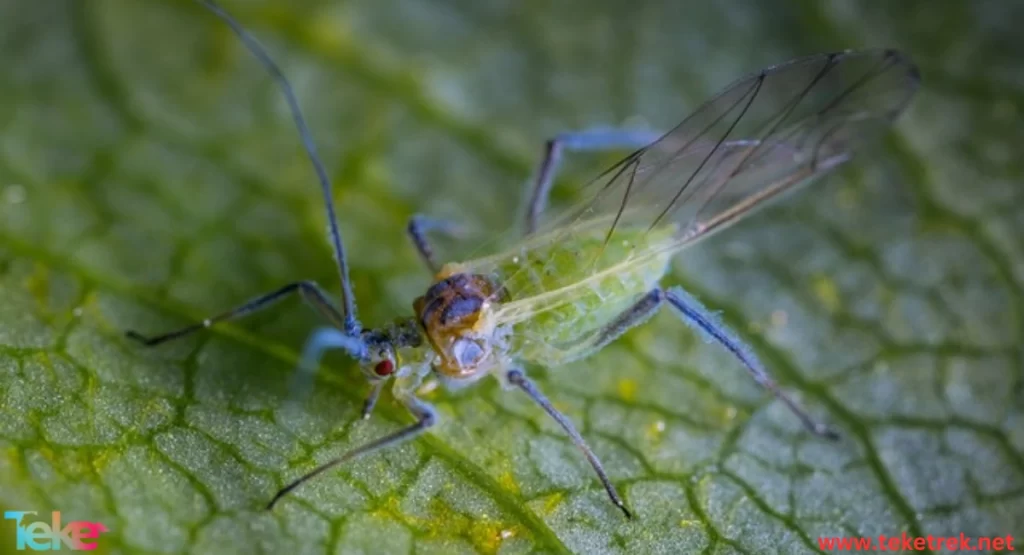
What are aphids?
Aphids are small insects with soft bodies, belonging to the Aphidoidea family, within the Arthropoda phylum, and the Insecta class. You may find it in several habitats around the world.
Aphids feed on plant sap using their piercing and sucking mouthparts, damaging plants by causing stunted growth, leaf curling, and transmitting plant viruses. Some aphid species are also known to secrete honeydew, a sticky sugary substance that can attract other insects and promote the growth of sooty mold.
How to identify aphids?
Aphids have the following characteristics:
Size and shape:
Aphids are small insects with soft bodies, typically less than 6 mm in length. They have pear-shaped bodies with long antennae and two tube-like structures called cornicles at their rear end.
Color:
Aphids can come in a variety of colors, including green, yellow, black, brown, pink, or red, depending on the species and developmental stage. Some of them have distinctive markings on their bodies.
Movement:
Aphids are slow-moving and tend to cluster on the underside of leaves, where they feed on plant sap. They can also be found on stems, buds, flowers, and fruits.
Damage:
Aphids can damage leaves, stems, and flowers by piercing plant tissues and sucking out the sap. This can lead to stunted growth, leaf curling, deformation, yellowing, or discoloration.
Aphid life cycle
- Aphids have a complex life cycle, with both winged and wingless forms of the same species developing depending on conditions. Since reproduction is asexual, the offspring of a single female are genetically identical to the mother, meaning the new generation is a clone.
- Without genetic recombination, various characteristics such as shapes, colors, or insecticide resistance remain unchanged. Wingless females reproduce without fertilization throughout the summer, producing live young as the eggs are incubated and hatched inside the mother’s body.
- Young aphids are born as developed nymphs and begin feeding on plant sap immediately. They grow rapidly, molting four times before becoming adults, with a noticeable white exoskeleton shedding during each molt.
- Aphid females are highly fertile, with a single female laying about 100 nymphs over several weeks. The generation time is short, with aphid nymphs reaching adulthood about a week after birth, explaining the rapid and significant increase in aphid density over a short period.
Aphid damages
Aphids can cause damage to plants in several ways, and the extent of damage can vary depending on the aphid species and the type of plant attacked. Common signs of aphid damage include:
- Yellow or deformed leaves:
Aphids feed on plant sap, which can cause leaves to turn yellow or become deformed. The damage is often more apparent on younger leaves.
- Stunted growth:
Severe aphid infestation can lead to slower plant growth or complete cessation.
- Sticky residue:
Aphids secrete a sugary substance called honeydew, which can cover the leaves and stems of affected plants.
- Sooty mold:
Honeydew can also promote the growth of black sooty mold, which can cover leaves and stems of infected plants. This mold can reduce the plant’s ability to photosynthesize and grow.
- Plant wilting or death:
In severe cases, aphid infestation can lead to plant wilting and death. This can occur when aphids are present in very large numbers and feed extensively on the plant.
Common aphid species
Some common aphid species include:
Green peach aphid:
This is one of the most widespread aphid species, feeding on a wide range of host plants, including peaches, potatoes, and tobacco. The green peach aphid can transmit over 100 plant viruses, making it a significant pest for many crops.
Cotton aphid:
Found in warm and humid regions, this aphid is a generalist and can be found on over 700 plant species, including cotton, citrus, coffee, cucumbers, watermelons, sweet peppers, chrysanthemums, and many other crops.
Potato glass aphid:
A European aphid species that seriously affects sweet pepper crops in particular. It also affects ornamental crops like begonias, as well as potatoes, lettuce, beans, eggplants, and sometimes tomatoes.
Rice root aphid:
A well-known pest in North America, living outdoors year-round. May affect plants grown in soil and aquatic systems.

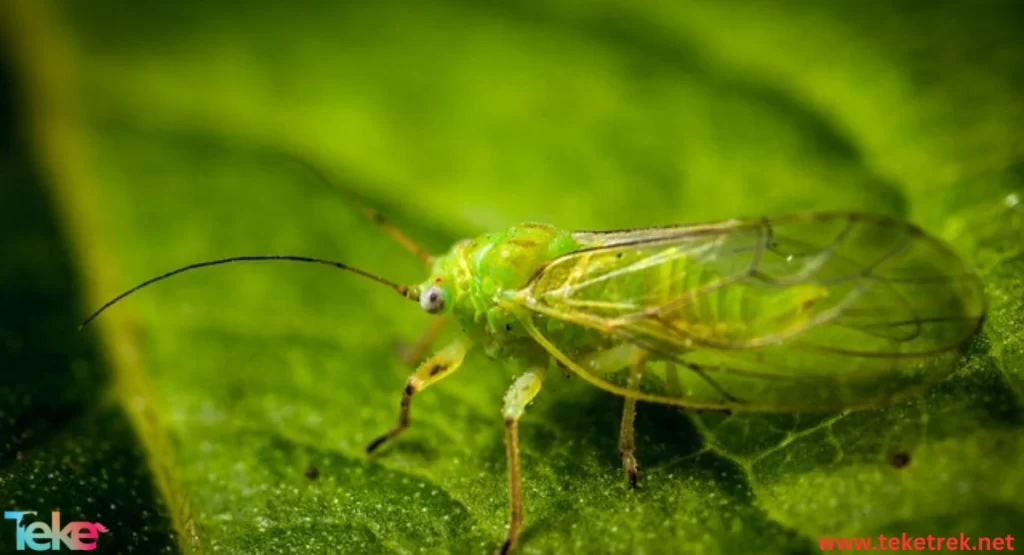
Frequently asked questions about aphids
- Can aphids cause plant death?
Yes, sometimes, especially when present in large numbers.
- What are the damages caused by aphids?
Yellowing or deformation of leaves: Aphids feed on plant sap, which can cause leaves to turn yellow or become deformed. The damage is often more apparent on younger leaves. Stunted growth: A dense outbreak of aphids can lead to slower plant growth or cessation.
- Where do aphids come from?
The growth of aphid colonies on affected plants in greenhouses depends on several factors, including the type of plant food and environmental conditions.
- Can you kill aphids?
Insecticidal soap solutions or solutions containing plant oils such as neem oil (3 ml/liter) can be used.
- When do aphids reproduce?
In these species (aphids), asexual reproduction occurs either in the summer or as long as conditions are favorable.
- What causes the stunted growth of a tree affected by aphids?
Poor nutrition due to the large number of aphids or cessation of plant growth.
- Are aphids asexual?
Yes, aphids are asexual.
- Are aphids harmful to humans?
Aphids are harmless to humans.
In conclusion, plants can be protected and prevented from aphid infestation by keeping gardens clean and free from weeds, debris, and plant residues that can harbor aphids. Also, by inspecting plants for early signs of aphids and controlling them with appropriate pesticides.

